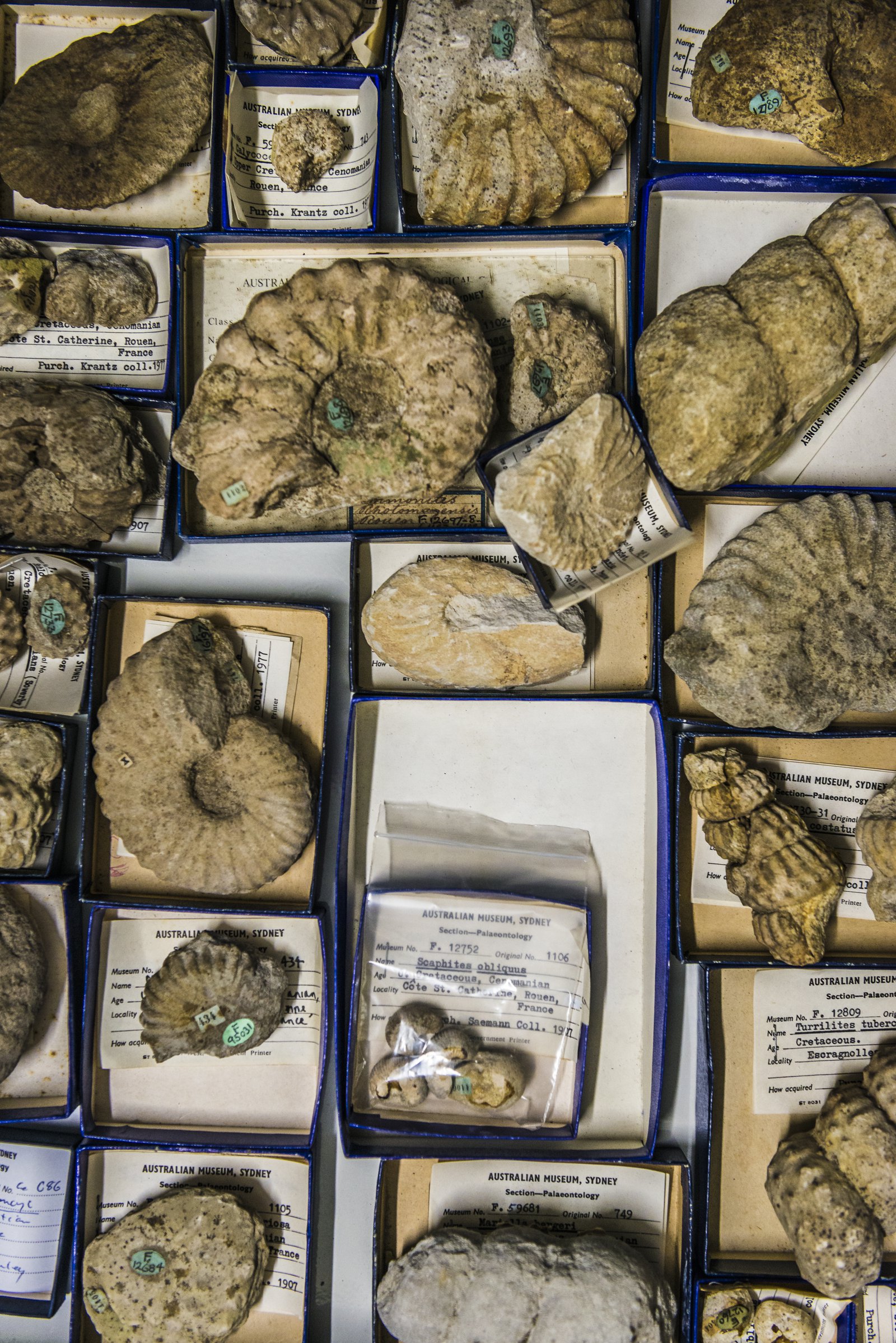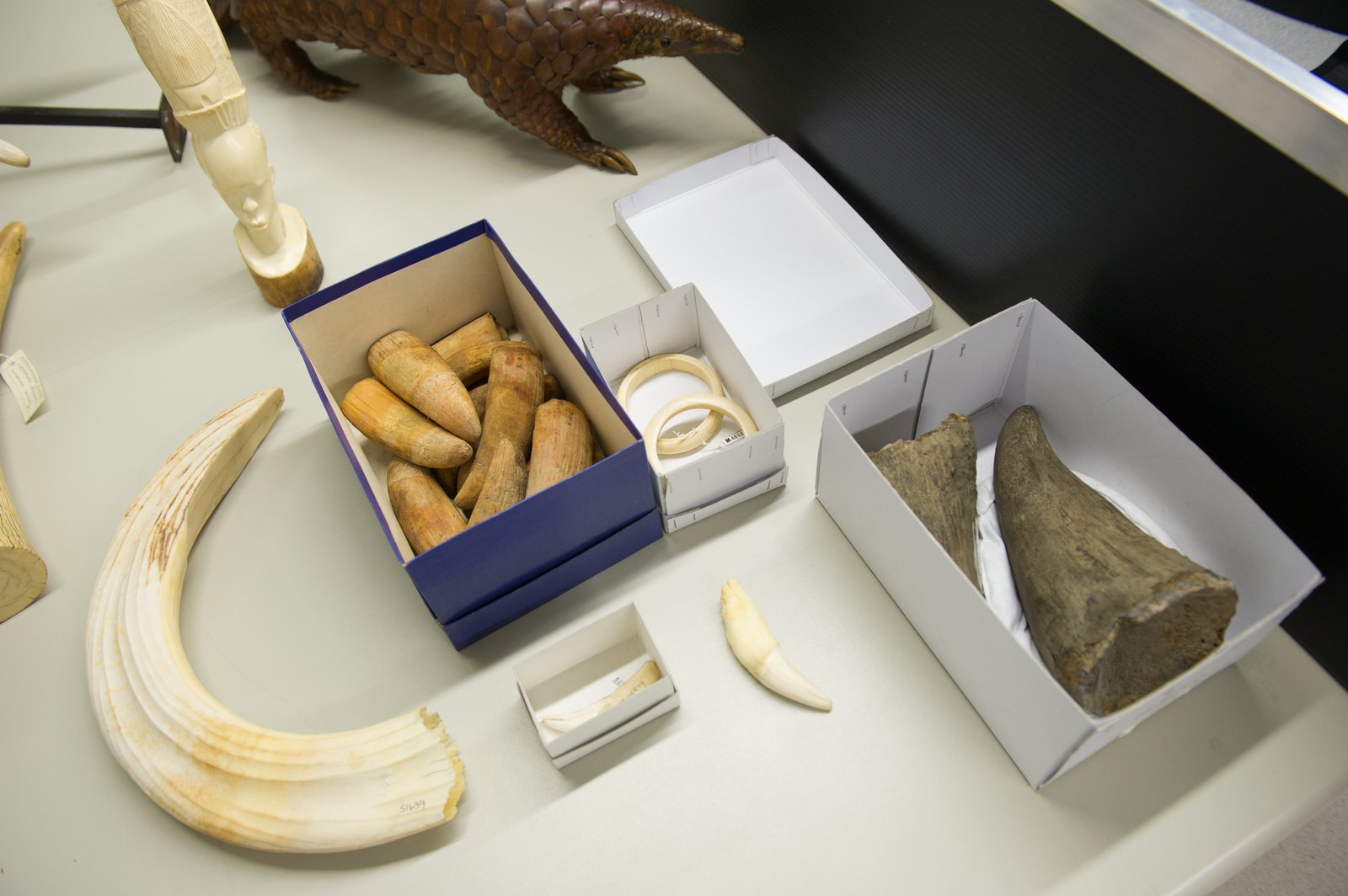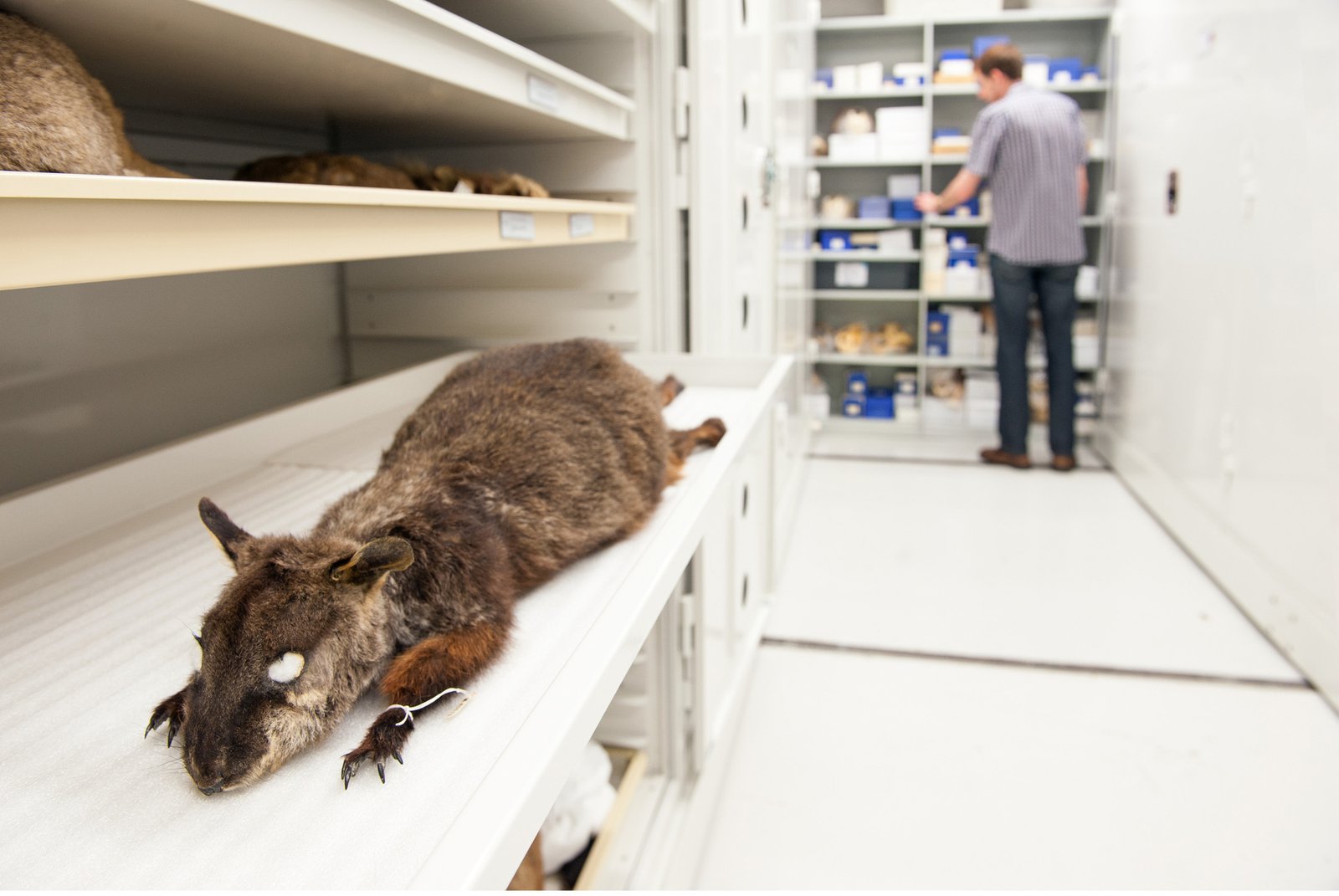The weird and wonderful secrets of the Australian Museum’s collections
From the discovery of sucking lice species to the creation of a chemical ‘e-nose’ to detect illegal wildlife trade, the AM’s collections contain limitless potential.

The AMRI Palaeontology Collection.
Image: Abram Powell© Australian Museum
While families wander the public galleries, scientists and non-scientists alike are continuously accessing the AM’s vast collections. Many of us are unaware of the 21 million animal, mineral, fossil and cultural specimens housed in the hidden depths of the museum. Meticulously amassed since 1827, they allow us to access long gone and inaccessible parts of the world.
In the extensive collection areas of the AM, an inquisitive person could expect to find an array of precious curiosities. From a large ethanol filled vat stares a floating great white shark, bearing large razor-sharp teeth. In climate-controlled rooms lay the carefully labelled and delicate skins of the last known thylacines. And in large cumbersome drawers mingle alien-like fossil trilobites, frozen in time following their demise millions of years ago.

The Great White Shark in the AMs collections.
Image: S Reader & M McGrouther© AMS
Taxonomists, palaeontologists, geologists, biologists and environmental scientists travel from far and wide to examine these specimens, from Upsala University in Sweden to Yale in the U.S.A. Studying fossils sheds light on the evolutionary changes of animal groups, including how they adapted to environmental change and the biomechanics of their movement. Taxonomists trawl through the collection to identify novel species and have even discovered animals which were not knowingly ‘collected’. Unknown species of sucking lice, painstakingly picked from the museums rodent collection, have been described using molecular and microscopic analyses. Even captive animals benefit from research on AM’s collections. Veterinarians interested in dental diseases in Kangaroos, Tasmanian devils and dingoes have studied mammal skulls in the collection to establish a baseline for normal dental health.

Sandy Ingleby with the AMs rodent collection.
Image: Nick Langley© Australian Museum
As technologies continually develop, their application to the AM’s collections enables new discoveries. Researchers use imaging techniques, such as CT and MRI scanning, to gather hitherto hidden anatomical information. This can shed light on the functional ecology and evolution of species. 3D printing allows specimens to be replicated and studied at other institutions. One team used the AM’s rhinoceros, elephant and hippopotamus specimens to develop a working model of an ‘e-nose’, a portable Near Infrared Spectroscopy (NIR) technique. This ‘e-nose’ can then be used as a screening device for the illegal wildlife trade.

Animal horns in the DNA Labs of the Australian Centre for Wildlife Genomics (ACWG) in AMRI.
Image: Ian Bird© Australian Museum
It is not only scientists who request permission to the collections, but also artists, authors and educators. The AM often works in collaboration with government organisations as well as individuals. For example, art works of the Brush-tailed Rock Wallaby are created by viewing skins and preserved specimens. These artworks are valuable for public education programs on Australia’s threatened species. Authors also request access to the collections. This includes for the development of a forensic field manual for the identification of human versus non-human remains, as well as to take photos of bats for a book on the caves of Lord Howe Island.

A skin of the Brush-tailed Rock Wallaby.
Image: Stuart Humphreys© Australian Museum
So next time you peruse the AM’s exhibition halls, take a moment to ponder the vast collections beneath your feet. These collections are a long way from being a stagnant historic record. They hold secrets to the history and future of life. As technologies progress, we will no doubt find the right keys to unlock these secrets.
Emma Flannery (Science Communicator AMRI)

